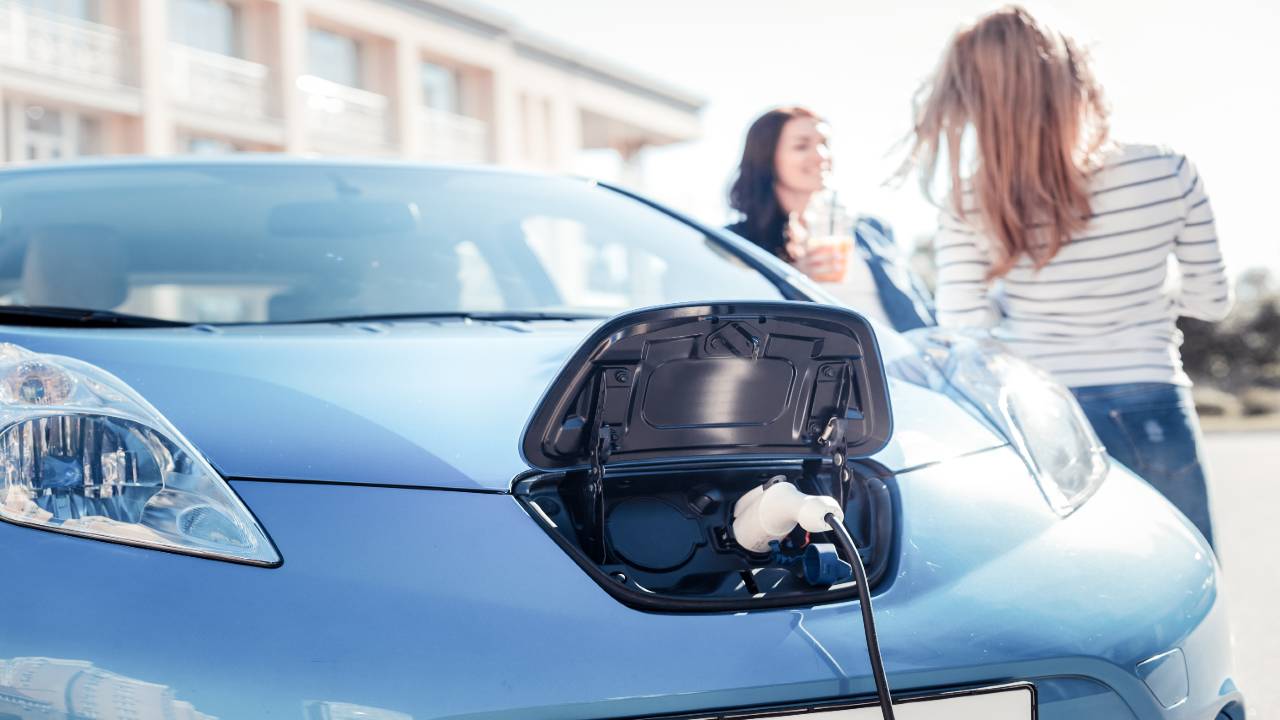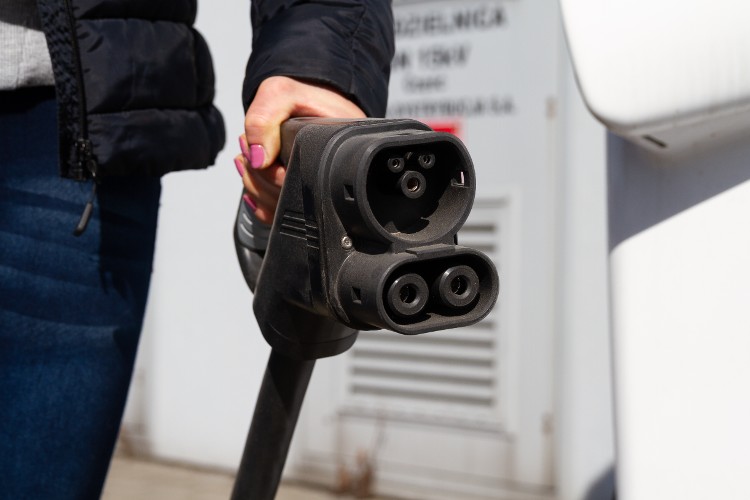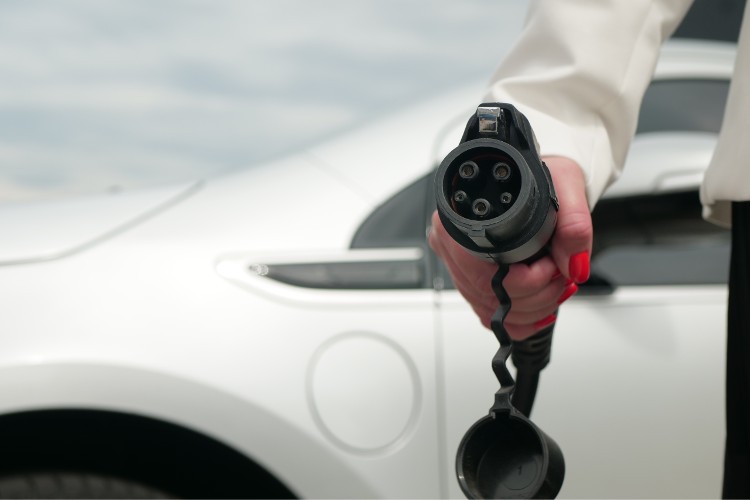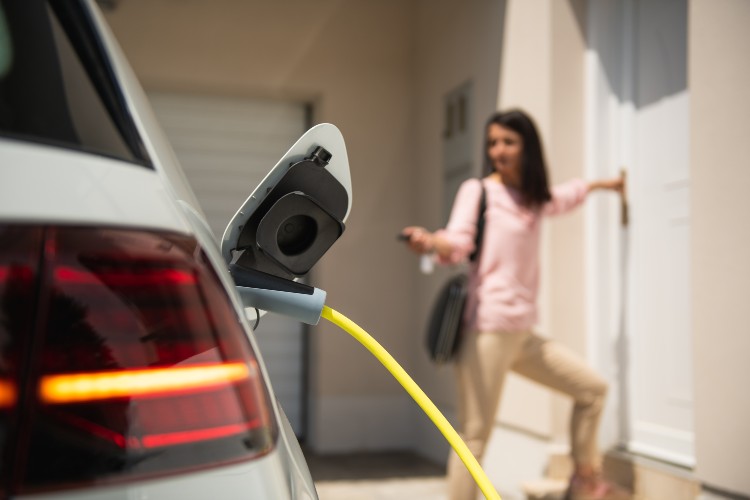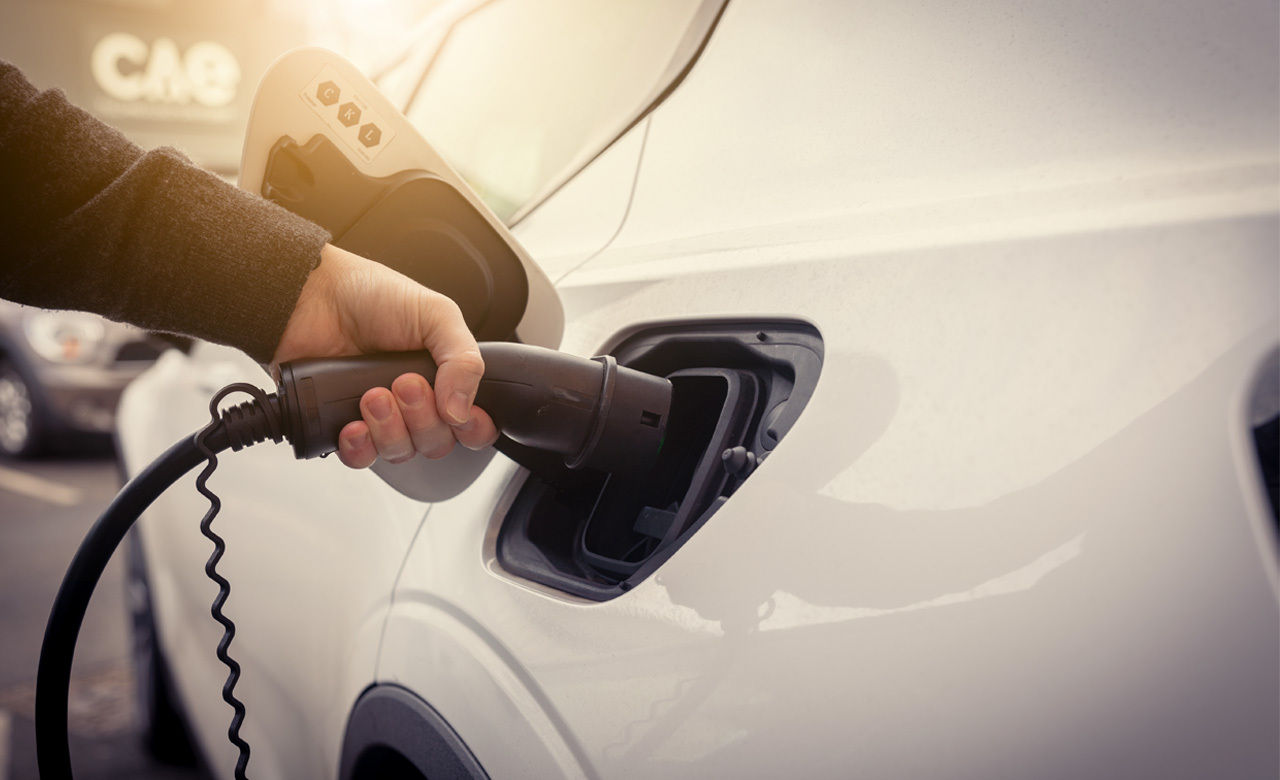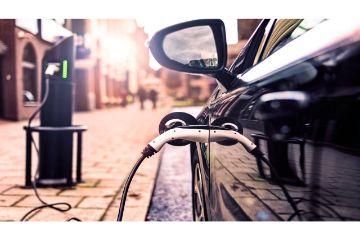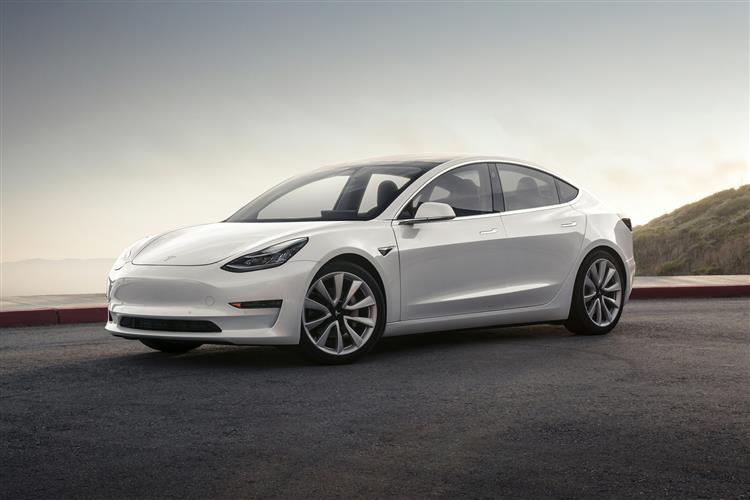If you’re thinking about making the switch to electric car leasing, you’re going to want to know everything there is to know about how to charge it.
In this in-depth guide, we’ll tell you everything you need to know about how to charge your electric car, where to do it, what you need, how much it costs, and how long it takes.
How To Charge An Electric Car
To charge your electric car, you’ll need to plug your vehicle into a charging point. All EVs today are designed to draw electricity from the national grid, so you can do this at home with a home electric car charger. If you don’t have one of those handy, as a last resort you can use the standard 2-pin domestic plug, but this is much slower in comparison.
If you’re out and about, you can use the ever-growing network of chargers in locations ranging from motorway service stations to supermarket car parks. There are plenty of online resources to help you find your nearest public charging point.
Whichever type of charging point you are plugging into, the process is the same – your electric car will use a charging cable that connects the car’s battery charging system to a charging station.
The location of the plug will vary from car to car. You can find out where yours is by checking the manual handbook.
Two Ways To Charge Your Electric Car
When you switch to an electric car, there are two different ways of recharging a battery– alternating current (AC) and direct current (DC). It’s useful to understand the difference between AC and DC charging when it comes to topping up the battery because this relates to how long it takes to charge your car.
Electricity is applied to a car’s battery through kilowatts (kW). The general rule of thumb for charging is the more kilowatts a charge point can churn out, the quicker the battery will charge.
AC Charging: Slower But Ideal For Daily Top Ups
AC charging is a much slower method for recharging an electric car and is the recommended way for topping up your battery on a daily basis. If you have a charge point installed at home, this will use AC power to recharge your car’s battery.
You’ll also find thousands of AC charge points in public locations such as hotels, shopping centre car parks and leisure venues – typically in places where you have a long dwell time.
AC charge points vary in speed with the slowest chargers providing around 3kW and the top-end chargers delivering 22kW. Most home charge points provide around 7kW and this is more than sufficient for an overnight top-up of the battery.
DC Charging: Faster And Can Be Found At Supermarkets And Service Stations
DC charging is associated with much quicker charging speeds. You may hear terms like “rapid” for these types of charge points. DC charge points are located in places with short dwell times, like motorway service stations or supermarket car parks, as their main purpose is to recharge the battery in the shortest time possible. Charging speeds vary from 50kW to 350kW.
The one point to note for AC and DC charging is the car will determine the maximum rate of kilowatts it can accept, as each vehicle manufacturer sets a ceiling on how quickly their EVs can charge.
For example, if you're leasing a Porsche Taycan it can accept a whopping 270kW on compatible DC charge points and up to 22kW on AC charge points. Comparably, the highly popular Vauxhall Corsa-e is capped at 100kW on DC and 11kW on AC, which is still more than suitable for everyday charging.
What Are The Different Types Of Electric Car Charging Cables?
One of the most common questions is “what cables do I need to charge my electric car?”.
Like with mobile phones, the cables required to charge an EV depend on the vehicle manufacturer and the charging system they’ve fitted to their cars.
Key Points
-
Most cars in Europe use a Type 2 connector. This can be used on public charging points and at home.
-
Many new electric cars come with a ‘CCS Combo 2 connector’, which means you can use a Type 2 plug, but you can also make use of public DC ‘rapid charge’ or ‘ultra-rapid’ points, which can deliver an 80% charge to certain cars in around 30 minutes or less.
-
Brands like Tesla have their own charging infrastructure, known as Superchargers.
-
It’s always worth checking the connection type of the car you’re thinking of driving and using an app like ZapMap to check the compatible public charging infrastructure in your area.
Type 2 And CCS Charging Cables
Most EVs available today require two types of cables to charge the battery – the Type 2 cable for AC charging and the Combined Charging System, otherwise known as CCS, for DC charging.
Type 2 Charge Cable CSS Charge CableType 2 and CCS are the recognised European Standard for AC and DC charging, so if you decided to venture onto the continent in your electric car, the charge points would be the same as you’d use in the UK.
Type 1 And CHAdeMO Charging Cables
It’s worth noting that some older, first-generation electric cars, mainly those manufactured in Asia, were built with Type 1 charging port for AC charging and the CHAdeMO charging port for DC charging.
Type 1 Charge Cable CHAdeMO Charging CableThis means that on some DC charge points you will find a CHAdeMO connector is also attached to the unit, in addition to the more commonly used CCS connector.
DC charge points are always tethered, which means they’ll have the cable permanently attached and ready to use. AC charge points on the other hand are either tethered or untethered, so it’s important to carry your own around in your car.
Can I Use A 3-Pin Plug To Charge My Electric Car At Home?
While it’s possible to charge an EV from a standard household plug socket as a last resort, it’s not recommended by electric car manufacturers for several reasons.
Firstly, standard domestic plug sockets aren’t designed to deal with such large power consumption, so at very best a three-pin plug will only draw a small amount of power. For example, a 40kWh Nissan Leaf would take more than 17 hours to charge from empty to full.
Some vehicle manufacturers supply a 3-pin charging cable with the car which is referred to as a ‘granny cable’. It’s recommended to keep this cable in the boot of your car for an emergency top up, or if you’re away from home with no access to charging, but it’s best to avoid using this cable for day-to-day charging at home.
Get A Charging Point Installed At Your Home
A far better solution for charging your car on a daily basis is to install a charging point and charge your electric car at home. If your property has off-road parking available, a home charge point is a safer, faster, and more convenient solution for regular charging.
How Long Does It Take To Charge An Electric Car?
Simply put, charging an electric car takes longer than pumping petrol or diesel into a fuel tank. While that sounds like a compromise, you’ll find that when you’re charging your car, you’ll be doing other things.
Top 3 Key Factors That Impact Car Charge Time
There are several factors that determine how long it will take to charge your electric car, but the three most important considerations are:
-
The Size Of The Battery On Your Vehicle
Like fuel tanks vary in size on traditional fuel cars, batteries in electric cars vary too. Battery sizes are shown as a kilowatt-hour figure (or kWh). -
The Power Rating Of The Charge Point
This is shown in kilowatts (kW) and can vary from a slow 3kW charger to an ultra-rapid 350kW charger. -
How much charge is left in the battery when you start charging
In simple terms, the lower the battery level, the more power is needed to recharge the battery.
Most vehicle manufacturers display the official charge times of their electric cars as if you were charging from 0 to 100% like on a smartphone.
If you know your car’s battery size in kilowatt hours (kWh) and the power output (kW) of the charge point you’ll be using then you can work out how long it’ll take to recharge.
For the Vauxhall Corsa-e with a 50 kWh battery pack, it would take:
- 7 hours 8 minutes with a 7 kW charger
50 (battery size in kWh) ÷ 7 (power output in kW) = 7 hours 8 minutes - 1 hour with a 50 kW charger
50 (battery size in kWh) ÷ 50 (power output in kW) = 1 hour
With an EV, recharging the battery is like charging your mobile phone. If your phone’s battery has 50% charge at the end of the day, you’d plug in before going to sleep and wake up to a fully charged battery in the morning. Do the same with your electric car, and each day you’ll wake up with the equivalent of a full tank of fuel.
Don’t worry about having your car charging overnight. Your EV will stop charging at 100%, so you only pay for the power you use with the cable remaining connected to the mains throughout the night.
How Much Does It Cost To Charge An Electric Car?
Like working out how long it takes to charge an EV, calculating the cost to charge is relatively simple too. You’ll need to know the size of the battery in kilowatt hours (kWh) to get a true feel for the costs involved specific to your vehicle.
For example, a full charge for the Vauxhall Corsa-e on the highest price per kWh at home would cost:
50 (battery size in kWh) x 0.34 (cost in pence per kWh) = £17.00
Read our complete guide to EV charging costs to learn more.
What Charging Apps Do I Need?
If you’re intending to charge your EV away from home, there are several different providers you can use to give your car’s battery a boost of electricity. As of May 2022, there are more than 31,000 publicly accessible charge points in the UK, with more than 1,000 new chargers being installed every month.
Zap Map To Find Chargers Across The UK
The best way to locate these chargers is through an app called Zap Map which displays all the public charging providers in the UK through a single source. Zap Map is designed to show you where your nearest public charge point is located, but it’s not used for activating the chargers.
Apps To Activate Charging Sessions
For charging in public, most network providers require you to download their app to activate the charging session. Some charge points, especially the faster DC chargers, are now fitted with contactless payment devices to make life easier when charging away from home. This is continually improving as newer infrastructure is installed.
But to avoid getting caught out when you arrive at a public charge point, make sure you’ve checked Zap Map in advance to determine who the network provider is, and if you need to download any apps. To get you started, here are some of the major networks in the UK that you may need to use from time to time:
-
Instavolt
-
BP Pulse
-
Pod Point
-
GeniePoint
-
Osprey
-
ChargePlace Scotland
-
Gridserve Electric Highway
-
IONITY
-
Shell Recharge
Discover more helpful advice on EVs from our experts, including information on how long charging takes and the cheapest electric cars available.

